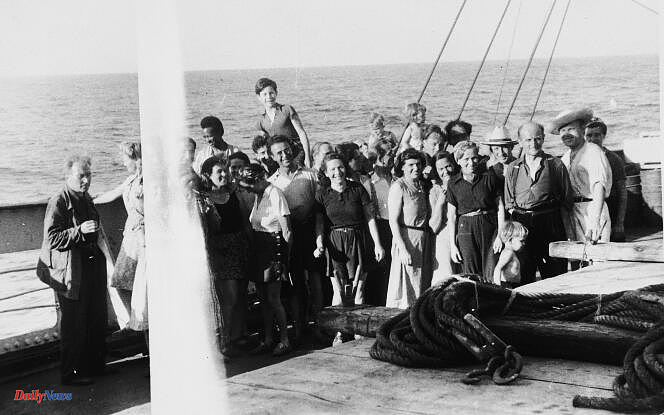Marseille, end of 1940. In the streets around the Old Port, hundreds of refugees, opponents of Nazism, artists, intellectuals, Jewish or not, wait to be able to leave Vichy France and embark for freedom. Objective New York or South America. And this, via the Marseille-Fort-de-France maritime link, in service from December 1940 to May 1941.
“Marseille resembles an immense fair where the most shady schemes coexist with a spirit of the greatest mutual aid,” wrote the photographer Germaine Krull (1897-1985). The journalist Soma Morgenstern (1890-1976) is more despondent: “It was not hares or foxes that we hunted in Marseille. They were Jews, Czechs, Poles, Austrians. Men from all the hunting districts occupied by Hitler. The touts were police officers and office workers. »
This maritime link, open for only a few months, allowed the Vichy regime to maintain the link with its “pearl of the Antilles” (Martinique remained loyal to Pétain until July 1943), and at the same time to get rid of a few thousand “undesirable”. There will be around 5,000 lucky people to board, after multiple difficulties, aboard the Winnipeg, the Capitaine-Paul-Lemerle, the Wyoming or the Mont-Viso.
Among these "undesirables" who, while waiting to leave Marseille, stayed in overpriced hotel rooms, escaped the controls of the Vichy police and ran everywhere trying to obtain the multiple authorizations necessary for boarding, were find celebrities. The ethnologist Claude Lévi-Strauss (1908-2009), the photographers Germaine Krull and Lore Krüger (1914-2009), the editor Jacques Schiffrin (1892-1950), the writers André Breton (1896-1966) or Anna Seghers ( 1900-1983) to name but a few.
It is this odyssey, from the streets of Marseille to the internment camps of Lazaret and Balata, in Martinique, via the thirty days of crossing, that this film by Jérôme Prieur tells. Author of successful documentaries on the period, including Darlan. The Third Man of Vichy and Living in Germany at War, Prieur did not have, for obvious reasons, images filmed by those involved since they do not exist.
Photos and extracts from letters
On the other hand, the director used several dozen photos taken on board during the long crossing or in Martinique (signed Germaine Krull, Ilse Bing and Dyno Lowenstein in particular) and amateur films shot during pre-war crossings and in the streets of Marseille in 1940 and 1941.
With original music by Marc-Olivier Dupin, Jérôme Prieur uses numerous extracts from letters written during this adventure by these learned passengers. From sadness to boredom, from the most intimate descriptions (promiscuity on board, internment conditions in Martinique) to hopes, everything is there. “I designed this film as an adventure film, like the logbook of these emigrants, to be with them,” underlines the director.
The end result is convincing. We let ourselves be carried away on this journey which will see these exiles experience anguish in Marseille, boredom at sea, disbelief in both Martinican camps. Before leaving, finally, for a new life. Some in New York as planned, others in Cuba, Mexico, Brazil, Buenos Aires, Caracas. Far from Pétain and a Europe that they hope to see again one day.












